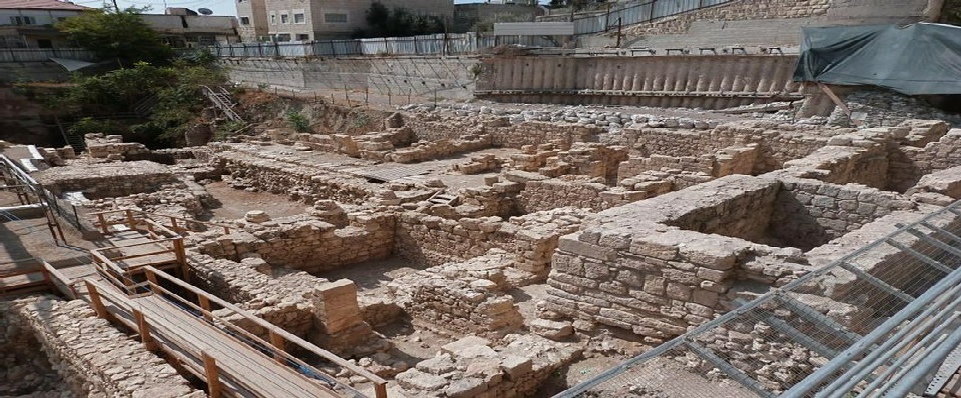Passover Facts and
Messiah in the Passover
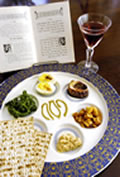
Combining our Judeo-Christian beliefs we find an enriching portrayal of Y’shua ha Meshiach (Jesus the Messiah) in the traditions of the Passover Seder. We trust you will find the following question and answer format informative regarding the traditions of our Passover and how they are a wonderful detailed picture of our Messiah and His atoning work for us. The questions will take you through most aspects of the “seder.” However, if we have not addressed an area you would like us to explain, please contact us with your question or comments when you Use This Form.
If we are in your area, we would be happy to put on a demonstration of the Passover Seder for your group. Simply Use This Form and we will contact you regarding the details.
We also provide annual Chanukah and Passover Meetings.
CALL for specific details:
(909) 883-3910
- What is the date(s) for Passover this year (2024)?
- Why do the dates change each year?
- When was Passover first instituted?
- What is a Messianic Passover Seder?
- What is the mother’s part in the ceremony?
- Why is a 3-pronged candelabrum used for Passover?
- What is the difference between “kosher’ and ‘kosher for Passover’?
- Why are four cups sipped or drunk from during the ceremony?
- What do the foods on the Seder Plate represent?
- What is matza?
- What is the afikomen?
- Why is there a place setting for Elijah?
- What is the Hillel?
- Is it the “Last Supper” or the “Last Seder”?
- Why does the Passover end with “Next Year in Jerusalem”?
Pesach 2025 (Passover) begins before sundown on Saturday, April 12, 2025, and ends after nightfall on Sunday, April 20, 2025
The Jewish calendar begins each day at sundown, based upon the creation of days in the Book of Genesis, where God declared, “the evening and the morning were the first day…, etc. (In the Hebrew language, the meaning seems to indicate that evening was even created first: “there was evening, and there was morning, one day”)
As the Jewish calendar is a lunar calendar, it is made up of five twenty-nine day months and seven thirty day months, for a total of 354 days in a year. To balance the discrepancies in length between the moon year and the sun year (365 days) that makes up the Gregorian calendar, a “leap month” is added when necessary.
The Jewish festival dates follow the cycle of the moon, thus their dates flex and change on the Gregorian calendar, although they are fixed days on the Jewish calendar.
We find the Israeli’s living as slaves in the land of Egypt for almost 400 years, when God raised up Moses (apr. 1225 b.c.) to deliver His people and bring them back to the Promised Land. Upon Pharaoh’s refusal to let God’s people go (even after 9 plagues had been sent upon Egypt), God instructed the Israeli’s to apply the blood of a lamb to the door-posts of their homes.
The first Passover was when the Death Angel “passed over” the houses of the Israeli’s who had applied the blood of a lamb to the door-posts of their homes, as God had instructed. All others awoke to discover the death of their first-born, both human and animal (tenth plague).
The ceremony of Passover was instituted from that day forward to be celebrated yearly, during which time they are to tell the story over and over again so that it is passed down to each generation. (The history of it is recorded in Exodus 12 and the commandment to keep it yearly is in Leviticus 23, which has been obeyed for over 3,000 years now). It also was to serve as an object lesson of the coming Lamb of God, who one day would shed His sinless blood, that each individual who believes might “pass over” from the promise of death to Eternal Life with God in heaven.
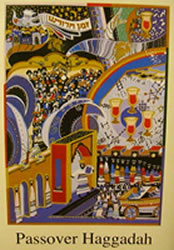
“Seder” means order of the Passover and it is the ceremony that is followed, using a guidebook, called a “hagaddah” (which means “telling”). On the first night of Passover the family gathers together and through the eating of symbolic foods, the recitation of the story of the first Passover, etc., the meaning and celebration of Passover is passed down to each generation, according to God’s instruction. In a Messianic Seder, the objects that refer to the Messiah are pointed out and where in the New Covenant they were fulfilled by Y’shua ha Meshiach (Jesus the Messiah).
In Orthodox tradition, the mother’s part is mainly in the preparation for the Passover celebration. The house must be given a thorough cleaning from attic to basement and every nook and cranny in between. All leaven (“homitz”) must be cleansed from the property. Leaven or “homitz” in the Bible is a picture of sin. This means all foods with yeast must be removed from the home, too. A different set of pots and pans and dishes is used for Passover. The everyday sets may have become contaminated during the year, thus they are not “kosher” (pure) enough to be used for Passover.
Once the entire house has been cleaned, the mother hides a little “homitz” somewhere in the house. The father and children go on a hunt and when it is found, it is scooped up with a feather duster onto a piece of paper, taken out of the house and burned. The house is then declared ready for Passover.
The only other role the mother plays is at the start of the Seder. Just as she lights the candles for Shabbat (Sabbath), she lights the 3-pronged candelabrum that is used at Passover time. She then recites the prayer that God has commanded them to kindle these lights and her part is done.
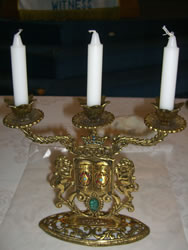 Some try to say that this stands for God, the patriarchs and the people. Others will state that it stands for God, the priesthood and the people. Still others will claim that it stands for Abraham, Isaac and Jacob.
Some try to say that this stands for God, the patriarchs and the people. Others will state that it stands for God, the priesthood and the people. Still others will claim that it stands for Abraham, Isaac and Jacob.
While these might seem like good enough answers, we who are Messianic believers see much more meaning than that. The 3-pronged candelabrum that is joined at the base as one (with three branches so to speak), looks much like the letter “sheen” in the Hebrew aleph bet (alphabet). (It is similar to the English “W” except that the English “W” has no common base to draw the three parts together.) The letter “sheen” stands for God. We see in this a picture of the triune nature of God; one God divided into three persons: God the Father, God the Son and God the Holy Spirit.
This theme is developed further during the seder. An interesting side-note is that God the Son claimed to be the “Light of the World,” and this candelabrum is to bring in the light to the ceremony.
“Kosher” simply means “pure.” It is a standard of purification that must be reached and declared so by a rabbi who has that authority. “Kosher for Passover” is an even higher standard that must be reached. For example, the “Kosher for Passover” matza has been grown under the watchful eye of a rabbi who has made sure that nothing has happened in the field to contaminate the seed or the wheat that grows. A rabbi continues to watch over the entire process from that inception to the factory where it is processed and boxed for consumer purchase. Every step of the way must be watched for fear of any homitz coming into contact and spoiling this special matza. Only special factories are allowed to produce this product, too. Once the process has been entirely completed and has held to this standard, it is given the “kosher for Passover” stamp of approval.
This is based on Exodus 6:6-7 where God gives His people four promises. They are sanctification, deliverance, redemption and praise. The four promises are: “I will bring you out from under the burdens of the Egyptians;” “I will deliver you from their bondage;” “I will also redeem you with an outstretched arm;” and “I will take you for My people, and I will be your God; and you shall know that I am the Lord your God….”
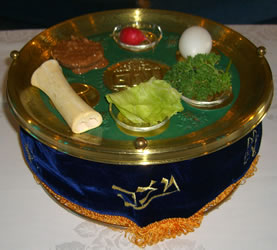 Karpas (lettuce or parsley) remind them of the meager diet they had to eat while slaves in Egypt. It is also a reminder that Spring is coming with its’ agricultural blessings. It is dipped in salt water twice, representative of the tears shed while in captivity (human tears are salty) and of the Red Sea (extremely salty) which was miraculously divided, giving the Jewish race their way to freedom, while drowning their enemy.
Karpas (lettuce or parsley) remind them of the meager diet they had to eat while slaves in Egypt. It is also a reminder that Spring is coming with its’ agricultural blessings. It is dipped in salt water twice, representative of the tears shed while in captivity (human tears are salty) and of the Red Sea (extremely salty) which was miraculously divided, giving the Jewish race their way to freedom, while drowning their enemy.
Radish (or horseradish) representative of the bitter herbs as they suffered bitterly in slavery.
Charoses is a mixture of apple, cinnamon, nuts and grape juice or wine. Just enough juice is mixed in to make the mixture stick together and look like the mortar that was used with the bricks they were forced to make and build with, until even it was taken away. However, it is also a bit sweet to remind them of the sweetness of freedom.
Roasted Egg reminds them of the Temple sacrifices and the brownish color reminds them of the burning of the Temple in 70 a.d. It also stands for new life (fertility) that comes from an egg.
Shank bone of a lamb representing the Pascal (Passover) Lamb that was sacrificed at the Temple before its’ destruction in 70 a.d.
Matza is unleavened bread. It is much like a flat cracker. It is flour and water that is baked without any yeast. As yeast is a picture of sin and all leaven (yeast) was to be removed from the house prior to the start of Passover , eating this bread, also known as the Bread of Affliction is a reminder of their quick exit out of Egypt (where they had been afflicted), and adheres to the restriction from all leaven during Passover and the 7 day Feast of Unleavened Bread that immediately follows Passover on the Jewish calendar. (The 14 th day of the month Nissan is Passover, the 15 th day of Nissan begins the Feast of Unleavened Bread.)
When it is time to eat the matza during the Seder, an interesting picture comes into view. A “matzatash” is used, which is a pocket that conceals three inner chambers, each layer holding a whole piece of matza. Again, we who are Messianic in our beliefs, see the picture representing God—the Triune God—who is revealed in 3 distinct personalities (God the Father, God the Son, and God the Holy Spirit) but is one God (see above question and answer for the 3 pronged candelabrum used at Passover time). One part of the three layers of matza is soon to come into view. The middle matza is taken out (middle being representative of God the Son) and the father holds it up that all might see it. God the Son came into view when He took on human form and came into view on earth. As this part of the ceremony develops it draws a very distinct picture of God the Son, Y’shua Jesus.
As the father is holding up the matza he declares the traditional Jewish invitation: “Let all who are hungry come and eat.” Y’shua claimed to be the Bread of Life and offered Himself freely to all who would come and they would hunger no more (John (Yochanan) 6:35 in the New Covenant: “I am the Bread of Life; he who comes to Me shall not hunger…” ).
As the matza is held up its’ peculiar characteristics come into view. It is seen to be striped. We read in Isaiah 53:5 that Messiah would be striped for us (“…and by His stripes we are healed.” Light can be seen passing through the matza, indicating that it has been pierced. Messiah was to be pierced according to
The prophet Zechariah (Zechariah 12:10: “And I will pour out on the house of David and on the inhabitants of Jerusalem, the Spirit of grace and of supplication, so that they will look on Me whom they have pierced…”)
The following procedure that takes place is given a Greek name in the midst of a very Jewish ceremony! It’s origin is unknown, but the Talmud declares it to be so at least since the destruction of the Temple in 70 a.d. if not stemming from a bit earlier in time. The Greek name is “afikomen” and means “that which comes after” (dessert) or may even more accurately mean “The Coming One” or “He that Cometh” (based on the root meaning of the Greek word, “afikomenos”). Again, we who are Messianic believers see this and agree with the Talmud that declares the matza was to be a picture of the pascal (Passover) Lamb that was to be slain. The prophet Isaiah (53:7) describes the coming Messiah as a “lamb that is led to slaughter” as a “sheep that is silent before its shearers.” This, too, would be why Yochanan the Immerser (John the Baptist), when he saw Y’shua Jesus approaching him and his followers, declared, “Behold the Lamb of God who takes away the sin of the world (John (Yochanan) 1:29).
The afikomen (middle matza) is now broken in half by the father. Half is placed in a white linen napkin and the father hides it away to be found later. We see the death and burial of Y’shua portrayed in this step. The father then breaks off a piece of the matza not hidden, eats it and passes this part around the table for all to have a part of, just as all are welcome to have a part of Y’shua Jesus.
Near the end of the seder, the children are allowed to go on a search for the hidden matza and the child who finds it and brings it out is given a prize. This represents the resurrection of Y’shua Jesus three days after His death, conquering the penalty for sin. The one who finds Him, finds the prize of Eternal Life in Heaven with Him one day!
According to Malachi 4:5, Elijah is to come and prepare the way for the coming of the Messiah who will usher in an era of peace and tranquility. Jewish tradition states that Elijah is to come when there are trials and tribulations and as this is true for the Jew today, the time is prime for the coming of Elijah to announce the arrival of the Messiah.
In the New Covenant Book of Mattathias (Matthew) 17:11-13, Y’shua explains to His followers how Yochanan the Immerser ((John the Baptist) came in the spirit of Elijah (Eliyahu) and if the nation would accept Him, He would bring in the promised Millennial Kingdom of Peace. However, He was rejected at this time, but according to God’s promises, will yet usher in the Kingdom of Peace when He returns to rule and reign from Jerusalem, at the perfect timing, according to God’s perfect plan for the ages.
The Hillel are the Psalms of praise that are sung near the end of the ceremony. They are Psalm 113 –118. Psalm 118:22 describes the cornerstone (for Solomon’s Temple) being rejected and later the mistake is realized and the cornerstone is brought back, put in place and becomes the foundation of the Temple. This too, according to Messianic beliefs, is a picture of Y’shua, rejected the first time He came, who will yet return and be accepted as The Promised One, and at that future time, will set up His Kingdom.
What is commonly referred to as the Last Supper of Y’shua with His followers before His crucifixion, should have been called the Last Seder, as it was the Passover meal that Y’shua and His followers were eating together.
In the English translation of Yochanan (John) 13:26 it is quoted that Y’shua dipped in the sop and gave to Judas. The correct Hebrew translation would have stated that He took the matza and dipped it in the charosis (see seder plate) and gave it to Judas. It was customary for the host to do so as a token of affection to an honored guest. Although Y’shua knew that very shortly Judas would betray Him, yet He was still reaching out in love (characteristic of God) to Judas.
In Mattathias (Matthew)26:26-29 we read that He took the bread and broke it and gave it to His followers, claiming “”this is my body which is broken for you…” This would have been the part of the seder known as the afikomen (see afikomen). According to Luke (22:19-20) after they had supped (had dinner), Y’shua took the cup (see question “why are four cups sipped…”) and stated that it was His blood which was shed for them. This cup would have been the third cup of the ceremony, known as the Cup of Redemption from Exodus 6:6 which states, “I will redeem you with an outstretched arm.” Y’shua was pointing out to His followers, that very shortly, He would stretch out His arms (in crucifixion) and shed His sinless blood that He might redeem all who would accept Him as their atonement. This was in fulfillment of Leviticus 17:11 which states: “For the life of the flesh is in the blood, and I have given it to you on the altar to make atonement for your souls; for it is the blood that makes an atonement for the soul.”
Y’shua was pointing out that the symbolism of 4000 years was being fulfilled now in Him, as He soon, as the perfect sinless Lamb of God would shed His sinless blood as an atonement for all who would believe.
Shaul (Paul) in the New Covenant also drew on this custom when he wrote to those in the city of Corinth and said, “(I Corinthians 5:7) Clean (purge) out the old leaven, that you may be a new lump, just as you are in fact unleavened. For Christ (Messiah) our Passover also has been sacrificed.
It is no coincidence that Y’shua, the Lamb of God, was slain on Passover, just at the time that the lambs were being slain. This object lesson, given to the Jewish people 4000 years earlier was a beautiful portrayal of Y’shua’s purpose for becoming human and coming to earth, that through Him we might be saved.
It is every Jew’s desire that they be in the land, in the Temple to properly celebrate the Passover, just as God commanded in days past. This hope is passed down from generation to generation and those who live in Israel end their Passover stating, “Next year in the rebuilt Temple.” There is a group called the Temple Mount Faithful (among others) who are actively trying to bring about the right to rebuild their Temple. For more information, see our page on Israel’s Future.
